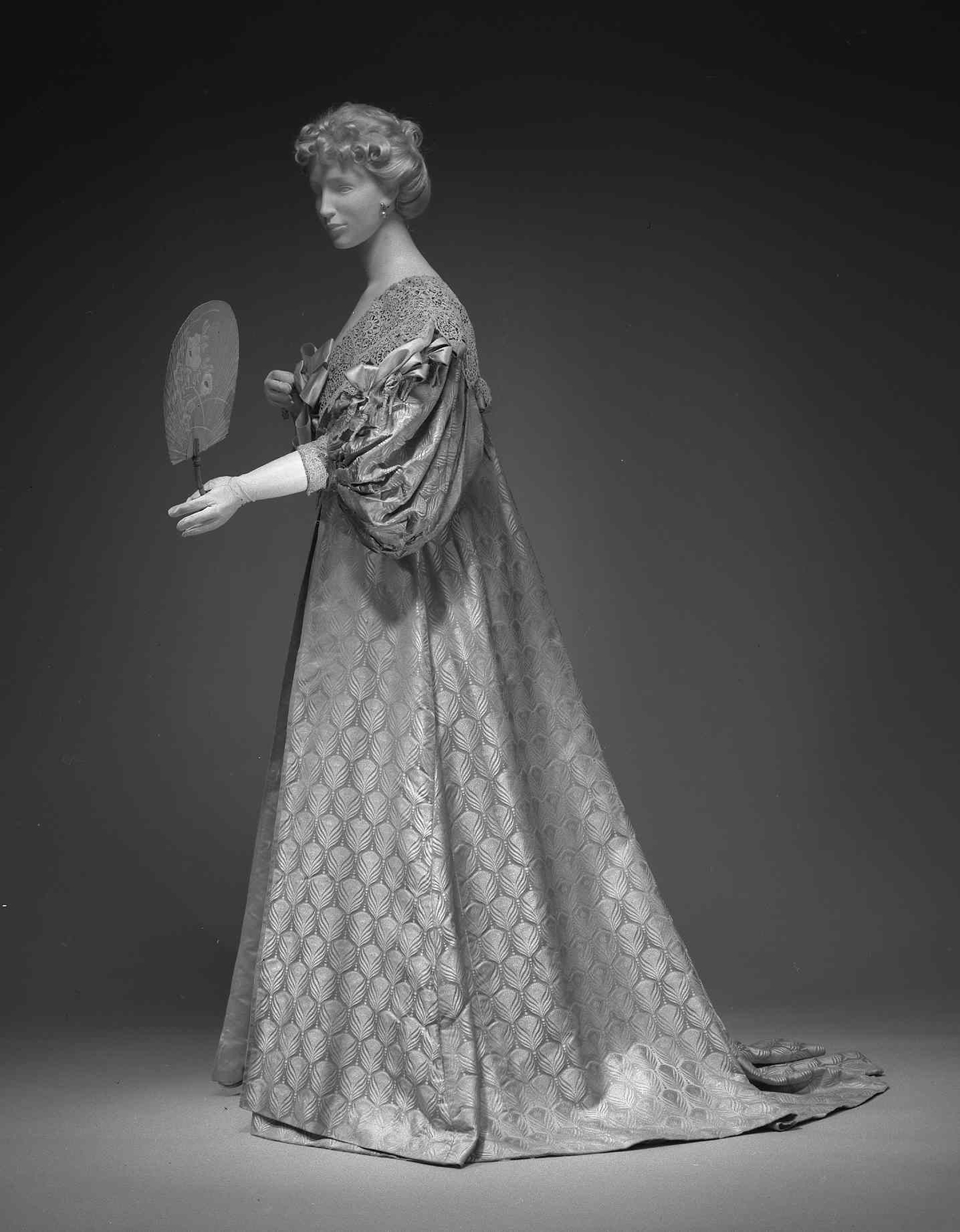Tea gown
Design House House of Worth French
Designer Jean-Philippe Worth French
Not on view
The sleeves and collar of this teagown reference the early 17th century, which was a common period for Worth to draw from. Although it appears to be a loose garment, the understructure is boned. Even though the garment would not have required such structure for its use, women were often more comfortable when retaining their armor. The economic use of fabric employing the selvedges as a decorative detail was also commonly practiced by Worth.
Jean-Philippe Worth began as an assistant to his father, Charles Frederick Worth, in 1875. Gradually he was allowed to create his own designs and when his father died in 1895, he became the lead designer for the house. He was praised for making elaborate artistic gowns with intricate trimmings on unique textiles, much like his father had before him. Although the House of Worth was still favored by royalty and celebrities through the turn of the century, their styles were no longer the forefront of French fashion after 1900. Around 1910 Jean-Philippe limited his design work to important orders and hired his nephew, Jean-Charles Worth, as the new lead designer before leaving the company entirely after World War I.
Due to rights restrictions, this image cannot be enlarged, viewed at full screen, or downloaded.
This artwork is meant to be viewed from right to left. Scroll left to view more.







